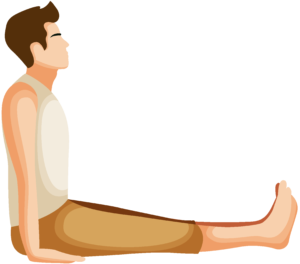Staff (Dandasana)
Pose Overview
| Common Name | Staff |
| Traditional Sanskrit Name | Dandasana |
| Sanskrit Name Pronunciation | dawn-DAHS-ah-nuh |
| Pose Difficulty | Beginner |
| Drishti
Drishti is the gaze or visual focus point during yoga poses.
Learn more about Drishti |
Straight ahead or the nose |
Staff, or Dandasana in Sanskrit, is a yoga pose that is said to be beneficial for strengthening the core, back and legs. The name of the pose comes from the fact that it resembles a staff, with the body held upright and the legs extended straight out in front of the body. The pose is said to be helpful for increasing flexibility and strength in the core, back and legs, and for promoting a sense of balance and focus. It is also said to be beneficial for relieving stress and anxiety, and for promoting a sense of inner peace.
Benefits of Staff
Strengthens the core and improves posture Stretches the shoulders and wrists Helps to improve concentration and focus
How to Enter Staff
Start seated on the floor with your legs extended out in front of you. Sit up tall, with your spine straight and your shoulders relaxed. Ground your sit bones firmly into the floor and engage your core muscles. Bring your arms alongside your body with your hands resting on the floor next to your hips, palms facing down. Gaze forward, keeping your neck and head in line with your spine.
How to Exit Staff
Release your arms and hands to the floor, and slowly release the engagement in your core. Take a few deep breaths and release any tension in your body. Slowly come out of the pose, either by crossing your legs and coming into a seated position or by lying down on your back.
Common Staff Modifications & Variations
If you have tight hamstrings, you can sit on a block or folded blanket to elevate your hips. To deepen the stretch in your shoulders and wrists, you can clasp your hands behind your back and lift your arms up. To increase the challenge, you can lift one leg off the floor at a time, balancing on the sitting bones.
Common Mistakes with Staff
Slouching or rounding the spine Not engaging the core muscles Holding tension in the shoulders
Safety Guidance
If you have any lower back or knee injuries, be cautious in this pose and avoid any pain or discomfort. Keep your neck and head in line with your spine, avoiding any strain in the neck. Keep your core engaged to protect your lower back.

